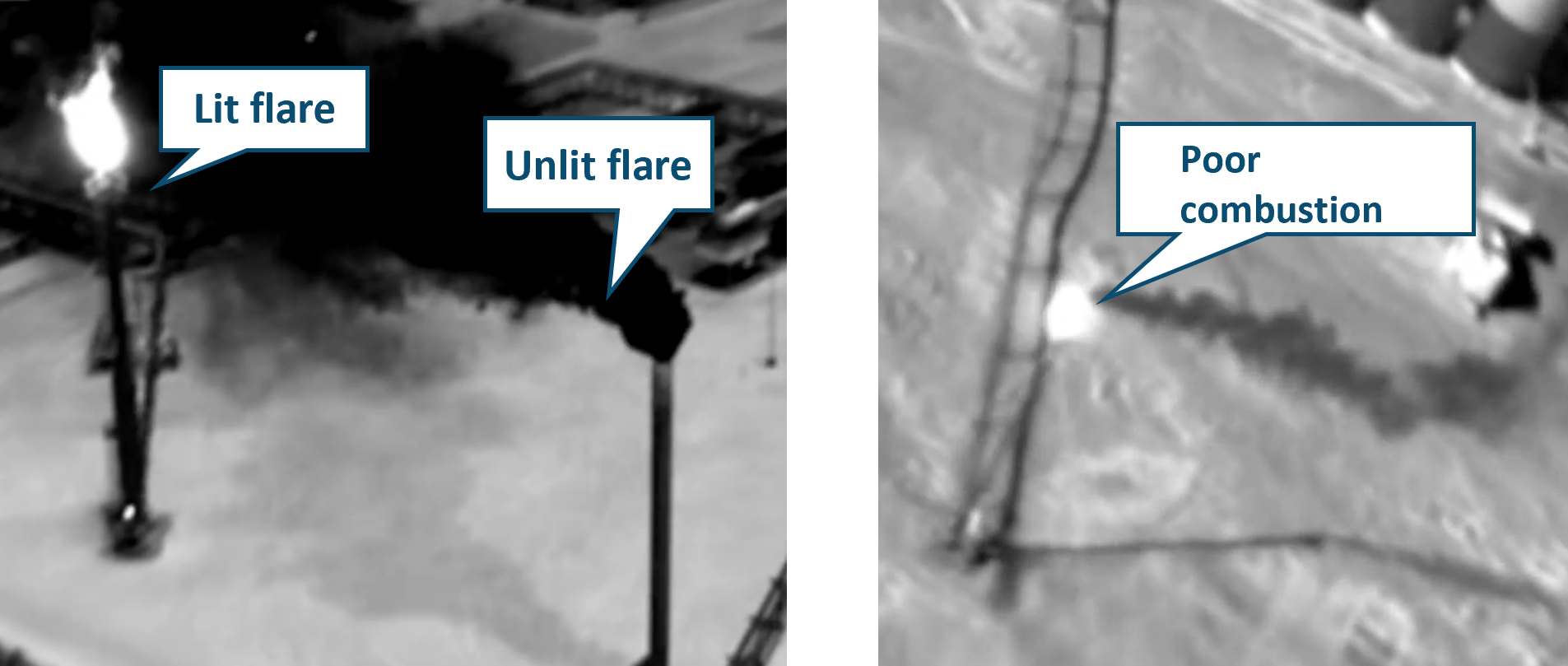
The use of helicopter mounted optical gas imaging (OGI) technology to identify unlit flares through the thermal signature of gas being emitted from the flare. The use of helicopters means that large areas, and large numbers of flares, can be inspected in a short period of time without the need for extended travel time between sites of interest
How it works
Gas emitted from an unlit flare reads to a localised drop in air temperature. This can be seen by InfraredA wavelength just greater than that of the red end of the visible light spectrum but less than that of microwaves. Infrared radiationhas a wavelength from about 800nm to 1… Learn more… thermographyInfrared thermography (IRT), thermal video and thermal imaging, is a process where a thermal camera captures and creates an image of an object by using infrared radiation emitted from the… Learn more… as a black plume, allowing unlit flares to be distinguished from non-operational flare stacks.
Advantages
Can be conducted concurrently with leak detection and repair (LDAR) surveys
Can be used in conjunction with wide area methods (e.g. satellites) to identify and locate specific methane anomalies
Can cover large areas rapidly, allowing multiple flares to be inspected
Limitations
Cannot measure methane directly or distinguish between gases
Requires a stable platform, such as a helicopter to provide sufficient observation time for the plume to be identified
Non quantitative
Go Deeper
Case study
The Permian Methane Analysis Project (PermianMAP) is an initiative that combines established data collection methods with state-of-the-art technologies to pinpoint, measure and report on oil and gas methane emissions in the Permian Basin. The results are made publicly available. it includes identification and analysis of methane from a variety of sources including flares. The use of helicopter mounted OGI cameras has identified methane plumes from different locations and sources, as shown in the images below.
Images courtesy of the Environmental Defense Fund.

OGI detects the distinct thermal signature of methane gas as it is emitted in to the atmosphere. It is widely used for activities such as leak detection and repair, but can also be used to identify a flare that is poorly combusting or extinguished. The majority of observations are qualitative rather than a quantitative assessment of flow.